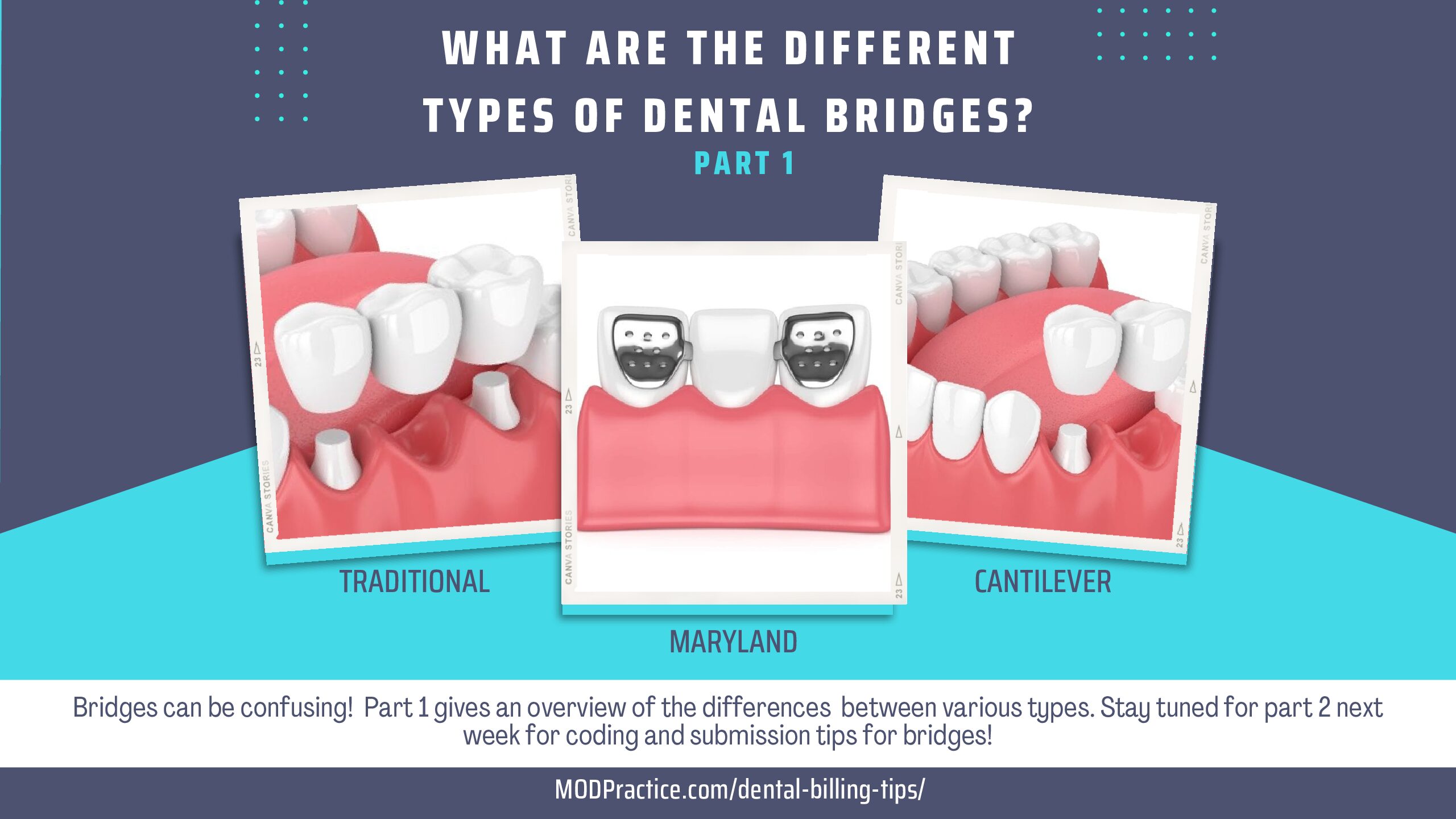TRADITIONAL BRIDGE
A traditional bridge is the most common type of dental bridge. It consists of retainer crowns attached to each of the two teeth on either side of the gap, and a false tooth (pontic)to fill in the space where a tooth is missing. A traditional bridge is recommended for the replacement of a missing tooth when the adjacent teeth also require restoration. Metal, porcelain fused metal, and ceramic are the common materials used to make such types of bridges.
CANTILEVER BRIDGE
Cantilever dental bridge has a slight deviation from the traditional dental bridge. Unlike traditional bridges, cantilever bridges use only a single anchor tooth with a retainer crown and can only be placed towards the front of the mouth. It is not advisable to place it at the back of the mouth as it may cause excessive strain on a single tooth. A cantilever bridge is a suitable option for patients that have healthy teeth on either side of the missing tooth but are not interested in having an implant placed.
MARYLAND BONDED BRIDGE
Maryland bonded bridge and traditional dental bridge share the same structure. However, unlike traditional bridges, metal or porcelain framework is used as anchors. Thus, this would eliminate the need for the modification of adjacent teeth and can simply attach a frame on its back. It is considered more affordable than traditional bridges. However, its strength depends on the material attached to the teeth. Metal framework can cause tooth discoloration.
IMPLANT SUPPORTED BRIDGE
Implant-supported dental bridges are similar to traditional bridges. However, instead of being supported by retainer crowns on natural teeth, they are supported by retainer crowns on dental implants. As a result, implant-supported bridges do not require preparation of neighboring teeth and can fill large gaps where multiple teeth are missing. Dental implants are known for their durability, strength, and ability to restore normal function. Implant supported bridges are an excellent choice for replacing teeth when multiple adjacent teeth are missing. This type of bridge does involve oral surgery to place the implant and the investment for this type of bridge can be expected to be more substantial in relation to cost and time.
REQUIRED DOCUMENTATION FOR BRIDGES:
Regardless of the type of bridge, these procedures usually require submitting the same documentation. Bridges are one of the most common procedures that drive up aging due to the documentation required on the first submission. So, what do you need to ensure is included?
- A pre-op full mouth series or panoramic x-ray. Insurance wants to see images of see both arches. A bitewing is not acceptable.
- Extraction dates. Sometimes claims submitters are surprised by this but insurance will always want to know when the teeth were extracted. If you see a new patient with missing teeth and you plan to do a bridge, an estimated date will be required on the claim. It also needs to be included in the chart note. Don’t forget to check your patients policy for a missing tooth clause!
- Post-op periapical x-rays. Every insurance company will want a periapical x-ray. Ensure the image shows the full tooth from the occlusal surface to the apex.
- Prep and Delivery date should always be noted on the claim.
- Restorative chart (optional) that shows all the missing teeth and restorative work already completed. This one is not a requirement but MODPractice has found including a completed restorative chart can be very helpful!
STAY TUNED FOR PART 2 TO LEARN MORE ABOUT CODING AND WE’LL SHARE AN EXAMPLE OF A GREAT CLINICAL NOTE!
Interested in learning more about Revenue Cycle Management for your practice? Contact us today!

